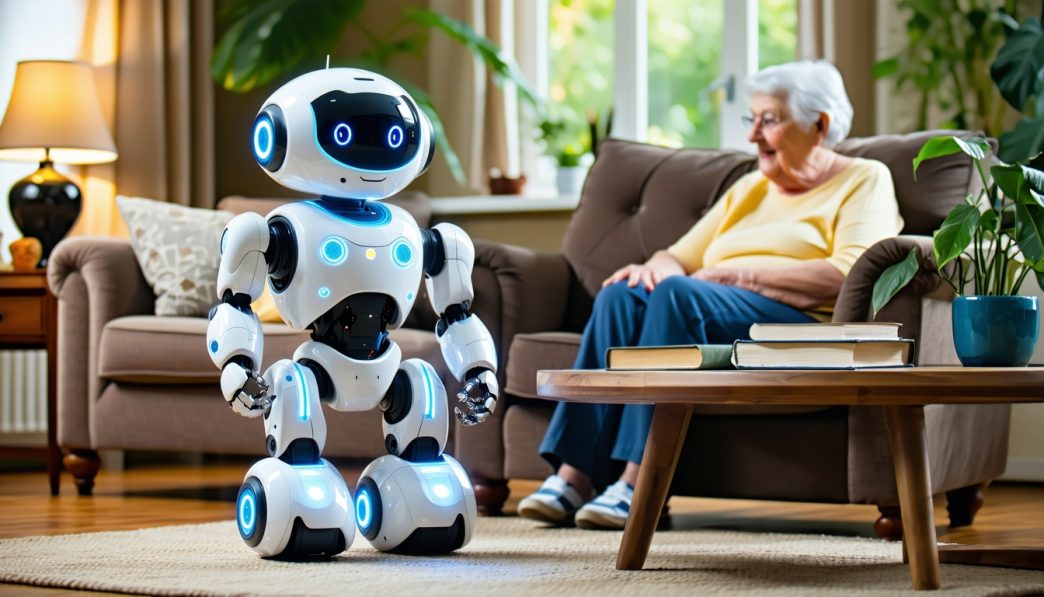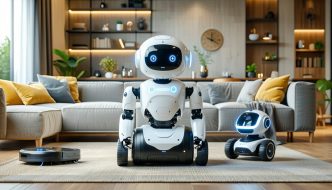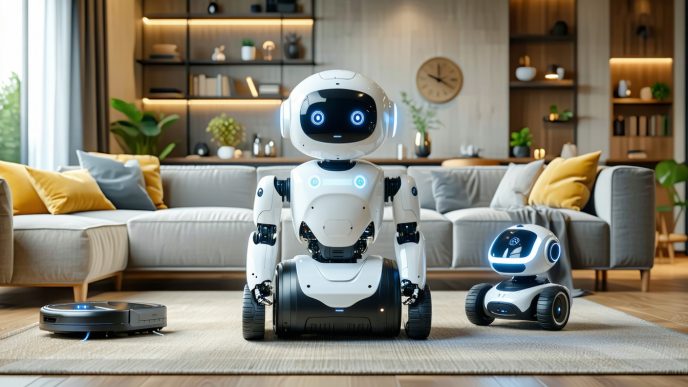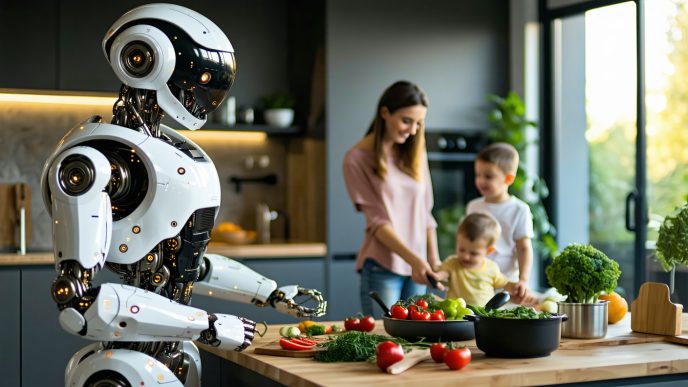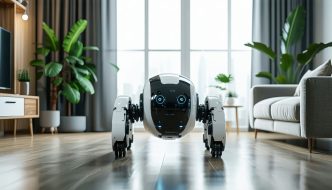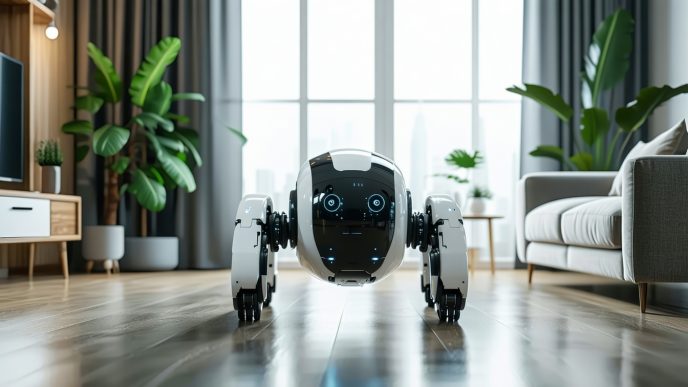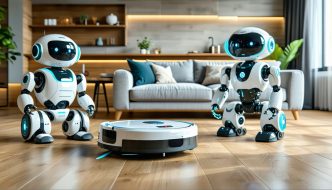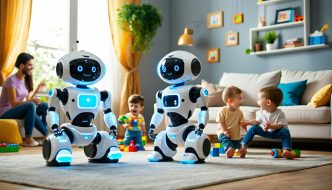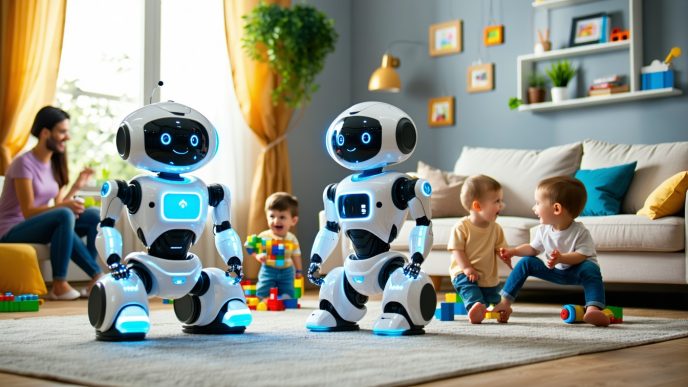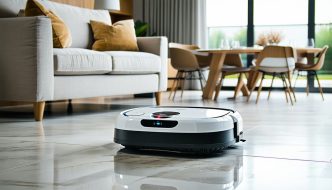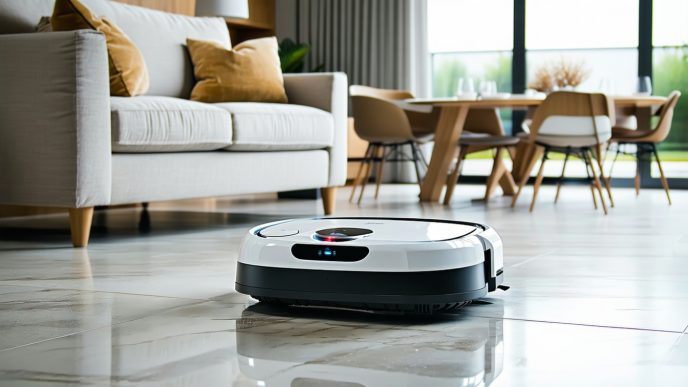Enhancing Home Life with Robots
The Role of Robots in Daily Living
Robots have increasingly become integral to enhancing daily life in homes. They provide convenience, efficiency, and support in various tasks around the house. For seniors and those with mobility challenges, robots can be especially beneficial, offering assistance where needed. The best robots for seniors at home can help with simple chores, mobility, and companionship.
Common tasks that robots perform include cleaning, monitoring home safety, and even offering social interaction. These machines can contribute to a more manageable and comfortable living environment, which is important for maintaining independence.
| Role of Robots | Description |
|---|---|
| Cleaning | Automated vacuums and mops take care of floor maintenance. |
| Monitoring | Safety robots can keep track of activities and alert family members. |
| Companionship | Robots designed for social interaction can reduce feelings of loneliness. |
Benefits of Introducing Robots at Home
Incorporating robots into household routines presents numerous advantages:
-
Time-Saving: Robots can perform repetitive tasks, allowing family members to focus on more important activities. For instance, cleaning robots can automate vacuuming and mopping, significantly freeing up time.
-
Enhanced Safety: Many home robots include safety features that monitor environments for hazards. They can alert homeowners to potential dangers, especially valuable for seniors or those with mobility limitations.
-
Improved Quality of Life: Robots that provide companionship can reduce feelings of isolation. This is advantageous for seniors who may live alone. The presence of a robot can offer comfort and interaction.
-
Customization and Adaptability: Many robots come with programming capabilities, allowing users to set preferences. This ensures that they cater to individual needs.
-
Low Maintenance: Modern robots are designed with durability in mind, often requiring minimal upkeep. Features such as self-cleaning mechanisms or alerts for maintenance make them user-friendly.
Here’s a table illustrating the benefits of using robots at home:
| Benefit | Description |
|---|---|
| Time-Saving | Automates daily tasks, giving users more free time. |
| Enhanced Safety | Monitors environments and alerts users to hazards. |
| Improved Quality of Life | Provides companionship and reduces loneliness. |
| Customization | Allows users to set preferences to fit their lifestyle. |
| Low Maintenance | Built to require less frequent upkeep and repairs. |
Robots designed for safety, mobility, and assistance offer significant advantages for homeowners and caregivers. They play a crucial role in modernizing home life, providing valuable support to seniors and families alike. For more options, explore our guide on best overall robots for home use.
Understanding Safety, Mobility, and Assistance
Robots designed for home use serve vital roles in enhancing the safety, mobility, and assistance of individuals, particularly seniors. Understanding these three key aspects is essential in selecting the best robots for seniors at home.
Importance of Safety Features in Home Robots
Safety features are paramount for home robots, especially those assisting the elderly. These robots often include various technologies to prevent accidents and injuries. Key safety features to consider include:
| Safety Feature | Description |
|---|---|
| Obstacle Detection | Robots are equipped with sensors to identify and navigate around obstacles. |
| Emergency Stop | An intuitive emergency stop feature allows users to halt operations quickly if needed. |
| Fall Detection | Some robots can detect falls and alert caregivers or family members immediately. |
| Safe Mobility | Robots designed for home use should have the capability to traverse different surfaces without tipping over. |
Incorporating safety features not only enhances the usability of robots but also gives peace of mind to users and their families. For further insights, explore our article on the best humanoid robots for home assistance.
Mobility Capabilities of Robots
Mobility is a critical factor in a robot’s performance at home. Home robots should have well-designed mobility capabilities that allow them to move around freely and efficiently within various environments. Considerations for mobility include:
| Mobility Aspect | Description |
|---|---|
| Navigation System | Advanced mapping algorithms that help the robot navigate rooms and avoid obstacles. |
| Wheel Type | Different wheel types (e.g., omni-directional wheels) enhance maneuverability in tight spaces. |
| Range of Motion | The ability to move across different terrains, such as carpets or hardwood floors, smoothly. |
Robots with superior mobility ensure effective communication and assistance throughout different parts of the home. Check out our article on the best quadruped robots for home navigation for examples of robots that excel in this area.
Assistance Functions Provided by Robots
Robots offer a variety of assistance functions tailored for home use, enhancing daily life for individuals, especially seniors. Common assistance functions include:
| Assistance Function | Description |
|---|---|
| Medication Reminders | Automated alerts to help users remember to take their medication on time. |
| Voice Assistance | Integration with voice-activated systems for hands-free control of home appliances. |
| Cleaning Support | Several robots specialize in cleaning tasks, such as vacuuming and mopping, which can significantly reduce the physical burden. |
| Companionship | Some robots provide a level of social interaction, reducing feelings of loneliness and improving emotional well-being. |
The diverse assistance functions available contribute significantly to improving quality of life. For more information on robots that specifically aid with cleaning, read our article on the best cleaning robots for homes.
Categories of Home Robots
Robots designed for home use can be categorized into several types, each serving distinct purposes. Understanding these categories can help homeowners, renters, and families choose the best robots for their specific needs, especially when considering the best robots for seniors at home.
Personal Robots
Personal robots focus on providing assistance and companionship to individuals. These robots can help with daily tasks, respond to voice commands, and offer reminders, enhancing the overall quality of life. Their features may include:
| Feature | Description |
|---|---|
| Voice Interaction | Engages users through speech and responds to queries. |
| Reminder Functions | Helps individuals manage schedules and medication times. |
| Smart Home Integration | Works with other smart devices in the home for seamless management. |
Cleaning Robots
Cleaning robots have become increasingly popular for maintaining household cleanliness. They autonomously vacuum, mop, or perform specialized cleaning tasks. Their specifications often include:
| Feature | Description |
|---|---|
| Suction Power | Determines the effectiveness in picking up dirt and debris. |
| Battery Life | Indicates how long the robot can operate before needing a recharge. |
| Smart Navigation | Allows efficient coverage of spaces with obstacle avoidance. |
For further insights into cleaning capabilities, see our article on the best cleaning robots for homes.
Entertainment and Companionship Robots
Entertainment and companionship robots are designed to engage with users through interactive experiences. They may play games, tell stories, or provide information. Key aspects include:
| Feature | Description |
|---|---|
| Interactive Games | Provides entertainment and mental stimulation. |
| Connectivity | Allows for integration with online content for updates and new activities. |
| Emotional Engagement | Built to recognize and respond to user emotions or moods. |
For families looking for engaging robots, check our article on the best companion robots for families.
Medical Assistance Robots
Medical assistance robots offer support to individuals with specific health needs, especially seniors. These robots can monitor health conditions, remind users to take medication, and even alert medical professionals in emergencies. Important features include:
| Feature | Description |
|---|---|
| Health Monitoring | Tracks vital signs and provides data to caregivers. |
| Emergency Alerts | Sends notifications for help in case of an emergency. |
| Medication Reminders | Ensures adherence to prescribed medicine schedules. |
For more advanced options, refer to our article on the best humanoid robots for home assistance.
Each category of home robots serves a unique purpose and has specific features that cater to different needs. Evaluating these categories allows individuals to make informed decisions and select the right type of robot to integrate into their daily life.
Key Features to Look For
When considering the best robots for seniors at home, several key features play a vital role in enhancing usability and practicality. These elements ensure that homeowners can maximize the benefits of their robotic companions while maintaining ease of operation.
User-Friendly Interface
A user-friendly interface is crucial for robots intended for home use, particularly for seniors. This feature often includes simple controls, intuitive navigation, and clear visual displays. A straightforward interface allows users to operate the robot without the need for extensive technical knowledge.
| Interface Feature | Description |
|---|---|
| Touchscreen Controls | Easy navigation with large, clear icons. |
| Voice Activation | Hands-free operation via voice commands. |
| Mobile App Connectivity | Control through a smartphone app for remote access. |
Customization Options
Customization options empower users to tailor the robot’s features according to their specific needs. This may include adjusting settings, programming tasks, or personalizing responses. The ability to customize enhances the robot’s functionality and user satisfaction.
| Customization Feature | Description |
|---|---|
| Programmable Settings | Set specific tasks or routines for the robot to follow. |
| Theme and Appearance | Choose different skins or appearances to match home decor. |
| Task Preferences | Select which tasks the robot should prioritize, such as cleaning or companionship. |
Durability and Maintenance
Investing in a robot requires considering its durability and maintenance needs. A reliable robot should be built to withstand everyday use and require minimal upkeep. Features such as easy-to-clean components and long-lasting batteries are significant factors to assess.
| Durability Feature | Description |
|---|---|
| Material Quality | Robots made from robust materials are less prone to damage. |
| Battery Life | Longer battery life reduces the frequency of charging interruptions. |
| Easy Maintenance | Designed for quick cleaning and maintenance, allowing users to focus on other tasks. |
By focusing on these key features, homeowners can select the best robots that not only improve daily life but also are user-friendly and built to last. For further insights into various types of robots available for home use, explore our articles on best overall robots for home use, best humanoid robots for home assistance, and best cleaning robots for homes.
Factors to Consider Before Investing in a Home Robot
When considering the integration of a robot into daily life, several factors can influence the decision-making process. Homeowners and renters alike should evaluate these aspects carefully to ensure they select a robot that meets their needs effectively.
Cost and Budget Considerations
The price of home robots can vary widely based on features, technology, and capabilities. Establishing a budget is crucial before starting the search for the best robots for seniors at home. Many robots offer essential functions at lower price points, while advanced models with multiple features can significantly increase the overall expenditure.
| Robot Type | Average Price Range |
|---|---|
| Personal Robots | $500 – $2,000 |
| Cleaning Robots | $200 – $1,500 |
| Entertainment Robots | $150 – $600 |
| Medical Assistance Robots | $300 – $3,000 |
It is essential to balance the initial investment with the long-term value the robot will provide in terms of convenience, support, and enhanced quality of life.
Space Availability for the Robot
Space considerations are vital when choosing a robot for home use. Prospective buyers should measure their available space to ensure that the selected robot can function effectively without causing obstructions. Various robots may require different amounts of space for movement and operation.
| Robot Type | Recommended Space |
|---|---|
| Personal Robots | Small to medium spaces |
| Cleaning Robots | Minimal to moderate spaces |
| Companion Robots | Flexible, depends on user requirements |
| Medical Assistance Robots | Space for mobility and access to areas |
Robots designed for small apartments might have distinct features that make them more suitable for limited spaces. For families living in larger homes, a robot with extensive mobility features may be ideal.
Compatibility with Existing Home Systems
Another important factor to consider is the compatibility of a robot with existing home systems. Many modern robots operate through smartphone apps, smart home integration, or voice-activated assistants. Ensuring that the robot can seamlessly connect to current systems will enhance usability and maximize its potential benefits.
| Compatibility Factors | Importance Level |
|---|---|
| Smartphone Integration | High |
| Smart Home Ecosystem Support | Medium |
| Voice Activation | High |
By evaluating these factors, individuals can make informed decisions about which robot will best serve their needs and fit into their living environment. For a broader overview of various robots, check out our guides on best overall robots for home use and best cleaning robots for homes.


